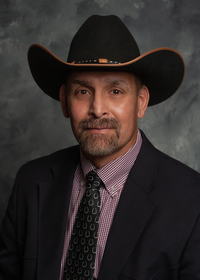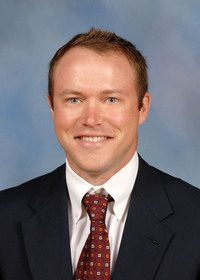Pasture Rejuvenation or Renovation?
Have you noticed that in the early years your pastures have relatively high production and less maintenance? Over time, many pastures can decline in productivity due to many factors such as soil type, drainage, moisture, nutrient deficiency, overgrazing (inadequate rest), etc. Before start discussing these two terms, we must provide a meaningful definition. Pasture rejuvenation refers to the improvement of biomass production and nutritive value of an existing pasture by in-cluding best management practices to make it more sustainable. On the other hand, pasture renovation means the de-struction and removal of the existing pasture species due to inadequate to forage production maintain and sustain live-stock. The first step in deciding when to rejuvenate or renovate a pasture should be based on conducting a pasture health assessment and determining the percent composition of the desirable species by evaluating the existing plant population (grasses, legumes, weeds, forbs, and bare ground) and defining the long-term overall objectives (Fig. 1). Some of the objectives should include stand persistence, forage production, nutritive value, equipment, associated cost and potential return on investment, and the level of risk associated with the management approach.

It is critical to identify why a decline in forage productivity and the need for rejuvenation. Pasture rejuvenation can be achieved by implementing three core principles: proper fertilization, effective weed control, and planned grazing manage-ment. A soil test is important to determine soil nutrient status and application rates that will allow optimum forage produc-tion. Evaluating your soil pH is also important as it influences the availability of essential nutrients. Under ideal condi-tions, fertilizer applications can be one of the most cost-effective practices to improve forage yield and nutritive value.
Plant response can be considerably improved when soil nutrient levels are below the medium level. Soils with P and K levels in the very low, low, and medium-range has a probability of yield response ranging from 95-100, 70-95, and 40-70%, respectively. In the south, grasses tend to lack nitrogen and potassium while legumes may benefit from the addi-tions of phosphorus, potassium, and sulfur and good pH. Undesirable weed species should also be controlled with se-lective herbicides. There is not one size fits all type of herbicide and it might be expensive and difficult to apply. It is im-portant to identify the major weeds present and select an herbicide with a broader spectrum to control such weed popu-lation. Herbicide applications when weeds are young (less than 6 inches tall) will require lower rates and could be more economically justifiable. Keep in mind that based on pasture neglect, you may have a soil seed bank and several treat-ments of follow-up in a season or over several seasons may be required for effective control. Always follow label recom-mendations for recommended rates and follow grazing and haying restrictions. Although mowing can be used for remov-ing unwanted weeds or brush, it will no provide long-term control of weeds, it can be costly (several clippings in a sea-son), and can increase seed dispersion if the plant is not clipped at the correct growth stage.
One of the most detrimental practices in forage systems is overgrazing. Until grazing management issues are ad-dressed, pasture rejuvenation or renovation will not solve the issue of maintaining competitive, healthy stands. It is im-portant to use rotational grazing (multi-paddock system) and leave enough forage biomass to allow plants to rest and recover. A stubble height of 3 to 4 inches is ideal to replenish the root system while extending the life of the pastures and decreasing costs. An evaluation of your grazing management system can also be done when assessing the grazing peri-od (timing and frequency), stocking rate, level of utilization, and length of rest periods. Sometimes providing longer rest periods can be a good tool to determine the rejuvenation approach. Keep in mind that providing smaller areas and ade-quate stocking rates can also help with the uniformity of manure deposition and nutrient cycling.
During pasture rejuvenation, mechanical disturbance in the late fall can be implemented in perennial warm-season grasses. Such disturbance can be applied by using a light disking or using an aerator. This objective is soil aeration is to disturb up to 4 inches of the soil to increase vertical water infiltration and increase water retention or the forage crop the next season as well as improve root penetration. Some producers implement this approach in the fall and overseed annual ryegrass to increase seed to soil contact. Producers need to be careful about causing too much disturbance of the root system that can be impacted by cold temperatures during the winter months.
A complete pasture renovation is a drastic approach, and it should be seeing as the last resource since it will require terminating the existing forage stand by using glyphosate and then tilling and reseeding. This is an approach that might be needed when the density of your desirable species is less than 50%. Proper seedbed preparation is important since loose soil results in improper seeding depth. A firm bed will help with soil-to-seed contact. A firm seedbed is considered when the heel of the boot is no more than ¼ inch deep. If taking this approach, it will be recommended to eliminate the stand in mid-to-late summer, plant a winter annual crop, and then replant the desired warm-season forage species in the spring. A significant drawback with renovating a perennial warm-season pasture is the possible loss of production in the year of establishment (especially with hybrid bermudagrass). In the case of tall fescue, elimination of the stand should start in the fall, followed by planting a warm-season annual forage (millet, sorghum-sudan hybrid, forage sorghum), fol-lowed by tilling, wait 2-3 weeks for weeds to germinate followed application of glyphosate (10 days before planting), and then planting tall fescue by mid-September.
Producers need to have a clear assessment of the current forage conditions and clear identification of the long-term goals to decide what will be more practical, rejuvenation or renovation. Cattle producers should implement rejuvenation or renovation practices that are economically justifiable to shift production towards higher yields and improve the nutritive value to sustain livestock production-based species, growth stage, and nutrient requirements.
For upcoming forage related events visit: http://forages.pss.msstate.edu/events.html



